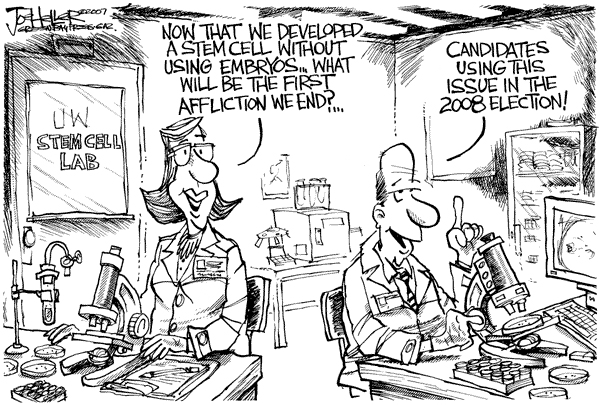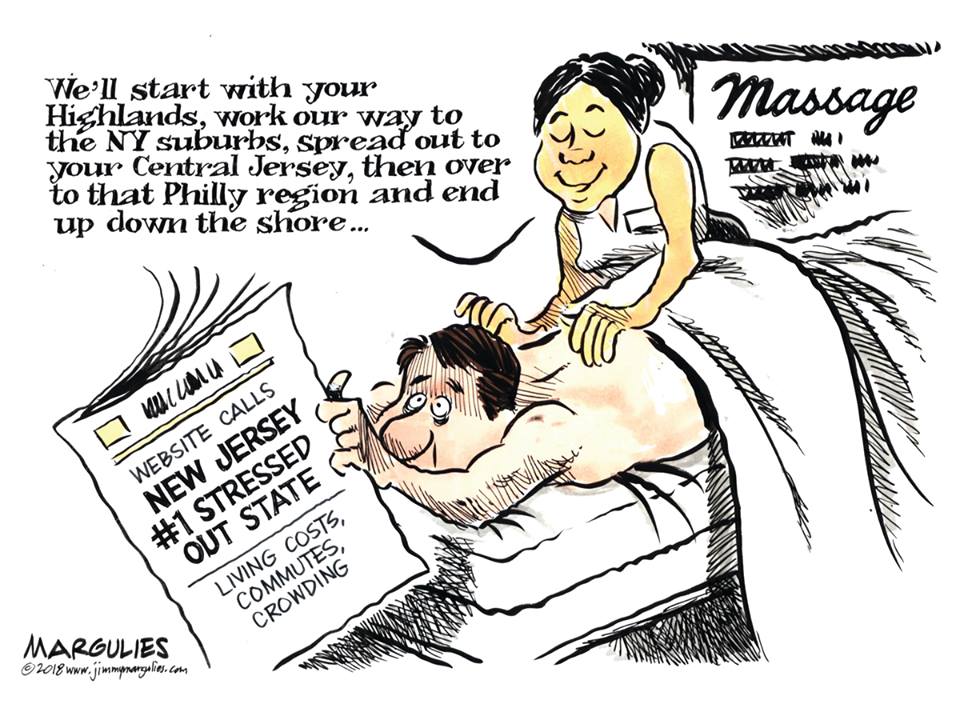March 3, 2010 · Vol. 5, No. 9
What Is "Reconciliation" And Why Is It A Threat?
by Newt Gingrich
Posted 03/03/2010 ET
During last week’s health summit, Senate Majority Leader Harry Reid uttered a remarkably dishonest and, in retrospect, ironic statement, claiming that “nobody is talking about reconciliation” to pass the health bill.
It was a dishonest statement because Democrats have been openly floating the specter of passing the health bill using reconciliation since it first became obvious it would have difficulty passing the Senate, including just days before the summit by Sen. Reid himself.
It was ironic because it seems that all the cable news shows, talk radio, blogs and pundits have been talking about since the summit is whether President Obama, Harry Reid, and House Speaker Nancy Pelosi will use the Senate budget reconciliation process to pass their big government, big bureaucracy health bill.
But what exactly is the reconciliation process? And why, exactly, is it so controversial a move to pass the health bill?
A Tool for Congress to Meet Spending Goals
The budget reconciliation process was created in 1974 as part of the law that created much of the modern rules and organizational structures used by Congress to pass the annual budget.
This new law required Congress to pass a budget resolution every year that would set the parameters by which the various congressional committees would write their specific parts of the total budget bill.
Within these budget resolutions, instructions can be given to specific congressional committees to create legislation that would alter current laws affecting spending and/or taxation in order to conform to the targets set out in the budget resolution.
To enhance Congress’ ability to meet budget resolution targets, these pieces of legislation are not passed under the normal rules of the Senate. Instead, they fall under the “budget reconciliation process” rules which prohibit unrelated amendments to the bills and set a maximum of 20 hours of debate on the floor. As a practical matter, this means only 51 votes are needed to pass a reconciliation bill because the limit on debate overrides the threat of a filibuster.
The Byrd Rule to Prevent Abuse of Reconciliation
While the budget reconciliation process was a success in its principal goal of giving Congress more power to meet the spending and revenue goals of the budget resolution, it quickly became prone to abuse.
Provisions that had nothing to do with meeting budget resolution requirements, even some that directly contradicted them, were passed using the reconciliation process.
To prevent this, the so-called “Byrd Rule,” named after Democratic Sen. Robert Byrd, who introduced the legislation, was passed in 1985 and made permanent in 1990.
The Byrd Rule allows any senator to raise a point of order objection to provisions in a reconciliation bill that they consider extraneous to meeting budget resolutions requirements. Then, it is up to the chair – either the Vice President (as President of the Senate) or, more often, the presiding officer of the Senate if the Vice President is not present -- whether that provision stays or is stricken.
However, the chair almost always relies on the advice of the Senate Parliamentarian to determine if that objection is legitimate. (Learn more about the parliamentarian here).
This determination is made based on six tests created as part of the Byrd Rule used to weed out provisions that have nothing to do with raising or reducing taxes or spending. It takes a 3/5 majority vote to override the decision of the presiding officer if he or she finds that a provision violates one or more of these tests. (This Congressional Research Service report is a good primer on the Byrd rule if you want to learn more).
Reconciliation in Action
Reconciliation has been used for 22 bills, of which, 14 were passed by Republican majorities. Nineteen of those bills were signed into law by the President. Three were vetoed. You can view a chart of these bills here.
Notice the similarity between them? All of these bills were obviously directly related to taxation and spending, and since 1985, have successfully met the Byrd rule tests.
Health Reform Is About More than Federal Spending
This is why passing the left’s big government, big bureaucracy health bill using the budget reconciliation process is so fundamentally dishonest and dangerous to Senate precedent.
Leaving aside the bill’s merits (which, to be clear, are abysmal), both its defenders and detractors would acknowledge that it is, for better or worse, a fundamental overhaul of the nation’s health system, both public and private. It sets new rules and regulations that span the entire healthcare sector. It is much larger in scope and more all encompassing in purpose than simply affecting federal spending and revenues.
This is not to say that the bill would not have some effect on the federal budget. Almost any piece of legislation could meet that meager standard.
The reconciliation process was only intended to be used for legislation directly related to meeting budget resolution spending and revenue goals.
The minor affect the left’s health bill would have on the deficit over 10 years (beyond that there is every reason to think it would increase the deficit substantially), even by charitable estimates, cannot be used to justify passing this sort of sweeping legislation using reconciliation.
This is one reason why a number of Democrats, including Sen. Robert Byrd, author of the Byrd Rule and who also helped create the budget reconciliation process in 1974, called the idea of using it to pass the health bill (and cap and trade) “an outrage that must be resisted.”
It’s also why Robert Byrd objected to President Clinton’s efforts to pass Hillarycare in 1993 using reconciliation.
Why should the left’s latest big government healthcare grab be held to any different standard?
Welfare Reform vs. the Left’s Big Government Health Bill
This week, the left is out in force, pointing to other significant pieces of legislation passed by Republicans using the budget reconciliation process as justification for passing their health care bill. One of the examples they are using is welfare reform.
Since welfare reform was passed while I was Speaker of the House, I am happy to compare the two cases.
First, welfare reform was an integral part of the Republican Congress’ efforts to balance the budget, producing immediate savings of over $50 billion dollars between 1997 and 2002. It was originally combined with the balanced budget act that President Clinton vetoed in 1995.
By contrast, for most of the debate over the health bill, the left has constantly boasted about how their bill was “deficit neutral." President Obama repeatedly sought to assure the American people that he would not sign a bill that “added one dime” to the deficit. Medicare cuts were combined with new taxes to pay for the cost of new programs and bureaucracies.
So while real effective health reform would certainly have a positive effect on the deficit, it is clear that the left never intended for their health bill to be primarily a budget bill. Its focus was and still is on getting more people covered. It was only after Democratic leaders began setting the stage for passing the bill using reconciliation that they began emphasizing it as a way to reduce the deficit. (Paul Ryan explains here how their bill uses smoke and mirrors to create the illusion of savings).
Second, when we decided to roll welfare reform into the balanced budget bill in 1995, we never stopped the conference committee efforts to resolve the differences between the versions of the welfare reform legislation that passed in the House and Senate earlier in the year. This continuation of work, along with the active participation of the governors, allowed us to quickly produce the final bill in conference the next year, once it became clear that President Clinton was now finally ready to sign welfare reform.
In contrast, the Democrats have done an end run around the conference committee process that would resolve the differences between the House and Senate bills, instead trying to negotiate their final bill in secret at the White House. This process continues today, with President Obama, Nancy Pelosi, and Harry Reid exploring different tricks they can use to ram a bill through their respective chambers without first producing a conference bill.
Third, welfare reform was passed with overwhelming bipartisan support, with more Democrats voting for it in the House and Senate than opposing it. It was signed by a Democratic President. Bipartisanship was integral to the success of the bill.
Today, Democrats are turning to passing the bill using the reconciliation process precisely because they are rejecting bipartisanship. Republican Scott Brown’s stunning election in Massachusetts, thanks largely to opposition to the left’s health bill, has meant that the Democrats would need at least one Republican vote to break a filibuster in the Senate. And their bill is so bad they can’t get one.
Finally, and perhaps most importantly, welfare reform was overwhelmingly popular with the American people. One poll showed that over 90 percent of Americans favored reform, including 88 percent of those on welfare.
As for the left’s health bill, after a year of debate and discussion, the American people have overwhelmingly rejected it. A poll we released at the Center for Health Transformation showed that it is opposed by a 2-1 margin. It is a fact that the more Americans learn about the left’s plan, both its substance and the corrupt manner in which it has been passed, the more they oppose it.
Three Corrupt Options for the Left
The left’s big government, big bureaucracy health bill is overwhelmingly unpopular with the American people. It is incapable of obtaining any bipartisan support in the Senate.
Faced with this reality, President Obama, Nancy Pelosi and Harry Reid should do the responsible thing and scrap the unpopular bill and start over, focusing instead on smaller pieces of legislation that could obtain bipartisan support.
However, they’ve made it clear they aren’t willing to do this. The Democrats are determined to pass a comprehensive health bill no matter how unpopular it is. This means they have to use reconciliation to avoid needing 60 votes to end debate in the Senate.
There are several corrupt options available to the Democrats using reconciliation.
One option would be for the House to pass the exact same health bill the Senate passed in December (thus avoiding the need for the Senate to marshal 60 votes again for a final bill now that Scott Brown is in office) with an understanding that a separate bill with a series of fixes would be passed immediately afterward using the budget reconciliation process in the Senate.
The left argues that technically, this would keep the use of reconciliation fairly narrow. However, the plain truth of the matter is that the Democrats would be using the budget reconciliation process to pass a bill they could not otherwise pass using the normal legislative process. It is a dirty trick that ignores congressional tradition and the overwhelming opposition to the bill from America.
Another option is for the Democrats to try and pass the full health bill in the Senate with 51 votes using reconciliation and then for the House to pass the same bill that emerges from the Senate.
For all the reasons outlined above, this would be an enormously inappropriate use of the budget reconciliation process. But it also means that the left’s endlessly complicated bill that creates hundreds of new regulations, new programs, and new bureaucracies would have to survive the Byrd Rule tests, creating the possibility that by the time all the extraneous provisions are removed, the final “swiss cheesed” legislation would be unrecognizable.
For President Obama, Nancy Pelosi and Harry Reid to promise to pass a bill when they, in reality, don’t know what the final bill will look like, is the height of irresponsibility. (Of course, they passed the stimulus without reading it so it would certainly fit with their precedent.)
How Far Are The Democrats Willing To Go?
Which brings us to a third, more drastic option for the Democrats to get their high tax, big government, big bureaucracy health bill passed.
As explained above, under the Byrd Rule, the vice president of the United States is ultimately responsible for deciding whether a provision in a reconciliation bill is extraneous. It is merely tradition that dictates he follow the advice of the parliamentarian, not a Senate rule.
To avoid their legislation being subjected to Byrd Rule tests, the vice president could choose simply to ignore the advice of the parliamentarian on points of order and rule to keep the extraneous provisions in the final bill. Any senator can appeal these rulings, but the appeal may be defeated with a simple majority vote.
To be clear, no vice president has ever acted in this fashion in the history of the reconciliation process. But no one has ever tried to push this kind of bill through reconciliation before either.
With the American people overwhelmingly opposed to the health bill, not to mention every other part of the left’s agenda, and the political environment turning increasingly toxic for the Democrats, President Obama, Harry Reid and Nancy Pelosi could decide to make a cynical, calculated political decision.
Faced with the high likelihood of political defeat in November, they could decide it is preferable to pass the bill they want and be defeated rather than to fail to get a health bill (or only a partial bill), and be defeated anyway.
In fact, this seems to be the message Speaker Pelosi was pushing this past weekend, dismissing her caucus’ concerns of defeat.
Republicans Must Vow To Replace the Left’s Health Bill
If the Democrats are bound and determined to exert all their power and manipulate every rule they can to pass their big government health bill, Republicans may not be able to stop its passage.
We’ll find out today as President Obama is set to announce his recommendation on the way forward.
But no matter what President Obama, Speaker Pelosi and Majority Leader Reid decide, the bottom line for Republicans is that they must stand with the American people in opposing this bill.
This doesn’t just mean voting against it and using every parliamentary maneuver available to delay its passage.
It also means running on a platform of replacing whatever left-wing health bill the Democrats manage to pass with real health reform that empowers patients and doctors, not bureaucrats, to bring down health costs. And delivering on that promise in 2011 if Republicans gain control of Congress.
And if President Obama is still determined to ignore the will of the people by vetoing the Republican bill after such a clear message from America, it means that the Republican candidate for President in 2012 must run on a platform that includes signing the replacement of the left’s big government health bill.
After all, no matter what dirty tricks the politician may try to get his way, in America, the people have the final say.
Your friend,
Newt Gingrich
Sunday, March 21, 2010
What Is "Reconciliation" And Why Is It A Threat?
Posted by William N. Phillips, Jr. at 3/21/2010 02:42:00 PM
Labels: healthcare reform, Newt Gingrich, reconciliation process, U.S. Congress
Subscribe to:
Post Comments (Atom)

































No comments:
Post a Comment